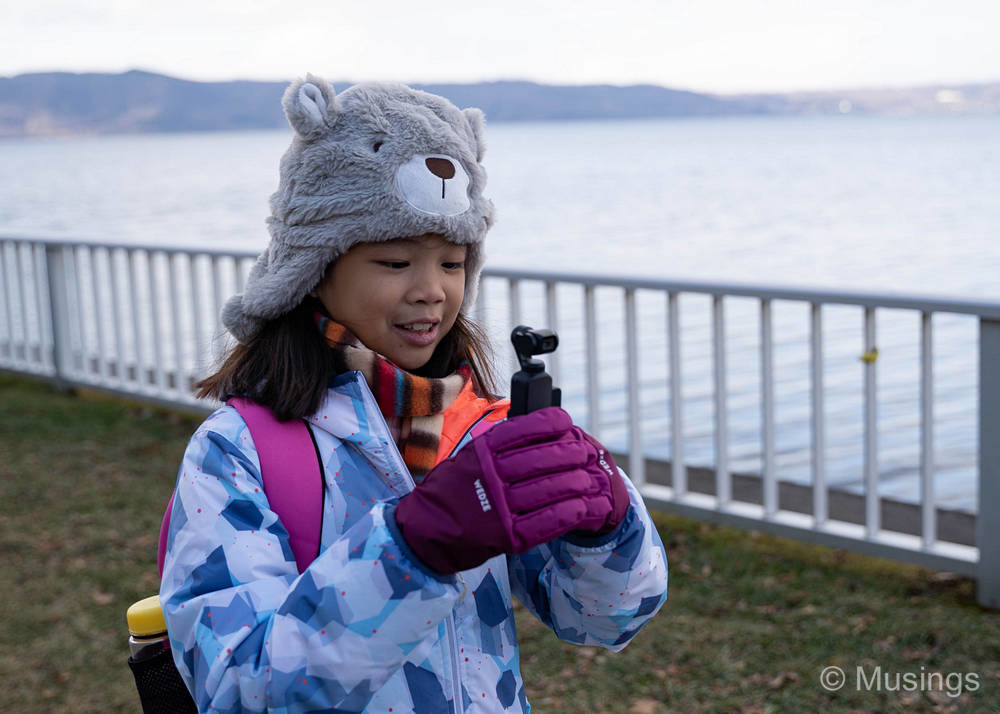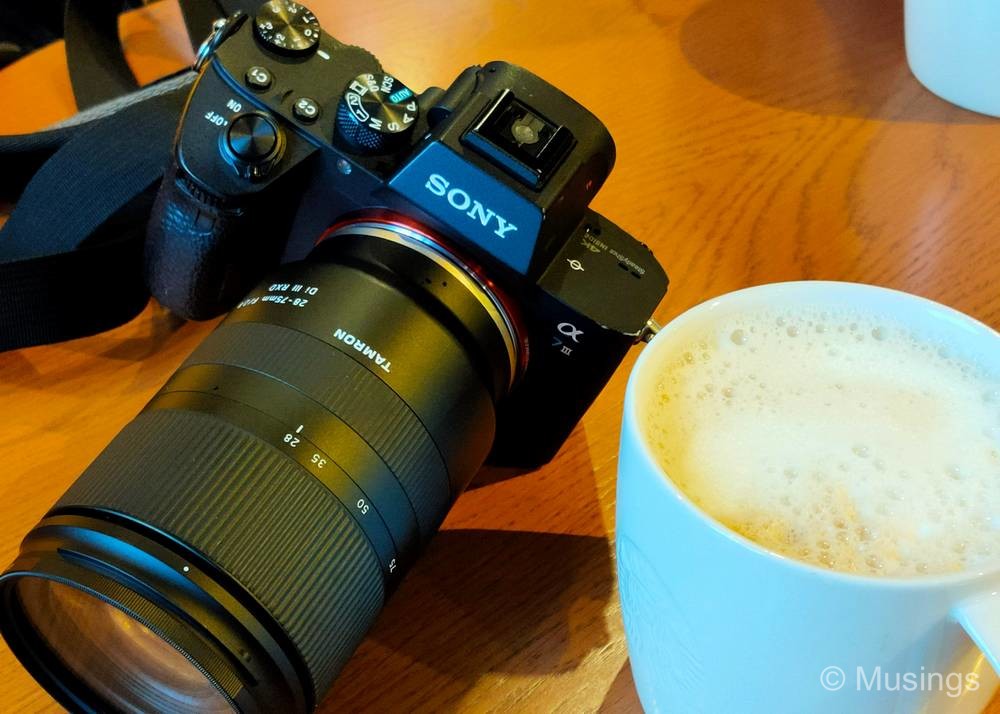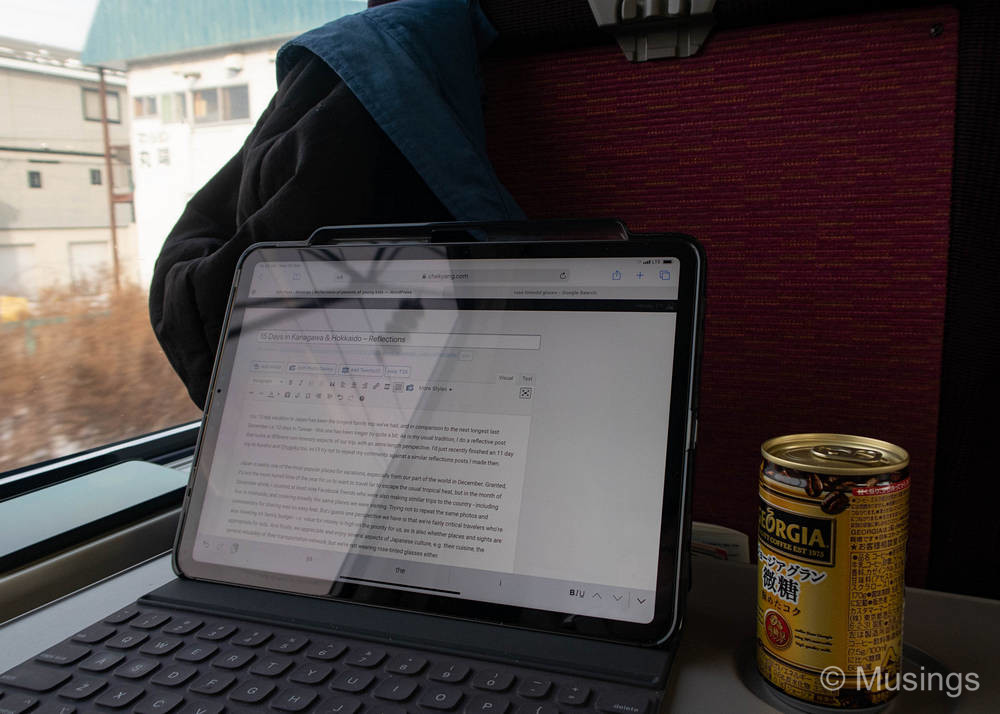After every major trip, I’d do a post commenting and making notes on how the various photographic and electronic gadgets that I brought along fared during the trip. A lot of stuff came along for this 15 day trip to Japan, though unsurprisingly, not everything got used. The gadgets included: the Lenovo X1 Carbon to look through and process the several hundred pictures and videos taken everyday, the iPad Pro 11 which was used for posting on social media and also writing these blog posts, the Sony A73 with the FE 24-105mm f4 and Tamron 70-200mm f2.8 lenses, the Olympus E-PL9 with the Panasonic 14mm f2.5G prime, the every trusty Canon G7X II, the DJI Osmo Pocket, and lastly even the Insta360 One X.
Here are the numbers for this trip:
Sony A73: 5,953 photos in .ARW RAW format
Oppo Reno 10x Zoom/Samsung S8+: 499 photos in .JPG format + 15GB (best guess) of videos in 4K 60fps video using the H.264 codec
DJI Osmo Pocket: 210GB of videos in 4K 60fps H.264 codec
Canon G7X II: 980 photos in .CR2 RAW format
Olympus E-PL9: 220photos in .ORF RAW format
I took more photo this trip than any so far – the numbers racked up could had been higher even were it not for the fact that we significantly tapered off the intensity of our itinerary in the last third of the trip. Of the 7,652 photos I took this trip, I’m keeping 5,075 of them and most of the videos – making up about 309B of data: 109GB of images and 200GB of 4K video – 184GB from the Osmo Pocket and all 16GB of the videos from the smartphones. That’s a keeper rate of 66.3%, – identical to my all time high during the last Japan trip. Also, the much larger number of photos I took this trip compared to the Chūgoku & Kyushu didn’t actually mean I was taking more averaging out. The latter was a work-trip. So, I actually averaged more shots in Chūgoku & Kyushu (4,951 / ~8 non-work days = 618 per day) than in Kanagawa & Hokkaido (7,652 / 15 days = 510 per day).
| Trip | Photos taken | Videos taken | Storage used | Photos kept | Keeper rate |
|---|---|---|---|---|---|
| Western Australia | 5,828 | No records | 77GB | 3,331 | 57.2% |
| Taiwan | 7,422 | 182 | 148GB | 4,200 | 56.5% |
| Maldives | 2,320 | 137 | 82.4GB | 1,518 | 65.4% |
| Chūgoku & Kyushu | 4,951 | 149 | 144GB | 3,283 | 66.3% |
| Kanagawa & Hokkaido | 7,652 | 216 | 309GB | 5,076 | 66.3% |
Further-on comments for each toy that came along for the trip:
This was the Sony A73’s sixth trip out of the country – four of which were this year – and also arguably at relatively more extreme usage scenarios: i.e. subzero temperatures, and frequent snowfall. The daily -3 to as low as -6 degree celsius temperatures over extended periods really affected the camera’s usual performance: at about mid-way around Day 07, I noticed that the A73 was really struggling to keep up in general usage: whether it was powering on the camera, waking it up from sleep, focusing, playback, chimping etc. everything slowed to a massive crawl, and we’re not talking about barely noticeable lag. It takes just perhaps a second for the camera to power-up and ready for its first shot back at home. In Hokkaido, it took as long as eight seconds. Battery life also took a massive hit: shooting for an hour at home will usually exhaust the battery maybe 5%. In winter, it’d easily dropped to 20-30% A check online reveals that several other users of the Sony A7 cameras do have challenges using their equipment in extreme cold too, but the remedy is straight-forward; basically cycling batteries when you can, and keeping spare batteries warm – e.g. in your jacket internal pockets. Also, I lost an eye-cup – again. This I think is the third eye-cup I’ve lost when the A73 is out of the country, and it’s gotten to the point where I usually stick an extra into my luggage, and I routinely order cheap third party replacements!
My heart literally sank too when the Sony FE 24-105mm f4 was damaged. Not just because of the costs I’ll incur to have the dented filter removed at Sony service center, but because the 24-105mm f4 is the best, all-round versatile lens I’ve had when it comes to traveling. The Tamron 28-75mm f2.8 replacement lens I bought at Yodabashi cameras – ¥87,000 before the tax rebate and discounts – is lovingly sharp in at all focal lengths, but significantly lighter in mass, but the less wide and long focal lengths the lens offers made it a lot harder all round to get the shots I wanted. That said, the lens’ faster speed, aperture wise, meant that there are some lovely portrait-styled pictures of the kid in snow which would had been slightly harder to get on the 24-105mm f4.
The Tamron 70-200mm f2.8 came out to play just once: during the visit to Asahiyama Zoo, but wow – the subject isolation I got from it was fantastic, permitting those memorable pictures of the zoo’s inhabitants I’ve shared in the post.
Most of the 4K videos taken this trip were on the DJI Osmo Pocket, and the 200GB microSD card I had inside it completely filled up right on the last day of the trip. The tiny buttons on the small device were also not easy to press when wearing winter gloves! Oddly, a couple of videos were recorded up-side down while the camera was held in the normal upright position. Seems that the gyro-sensors are a little finicky. They can be fixed of course, e.g. in Adobe Premiere, but it’s still a chore to do so.
I was expecting the Olympus E-PL9 to be heavily used this trip – the Canon G7X II was in fact tossed into my backpack almost as an afterthought and a just-in-case. As it turned out, I switched from the E-PL9 to the G7X II for family selfies and quick/discreet pictures from Day 03 onwards. The E-PL9 was just too big to use as a family wefie camera, never mind also that its depth of field also meant there was little margin for error if one of the four of us in the group photo is standing a little closer or further away compared to the rest. Next trip: just leave the E-PL9 at home and bring the G7X II. Interestingly too, the G7X II wasn’t bothered in the slightest bit by the cold temperatures. It dutifully powered-on quickly, focused, and took shots like it does in warm weather.
The InstaOne X 360 didn’t get any loving use, again. It’s a fantastic camera for 360 photography of course, but with my backpack everyday already jammed with winter clothes, emergency items (e.g. wet-wipes, powerbank, cable) and camera gear, I just didn’t relish the thought of having to fish out yet another camera!



So, my takeaways:
Leave the E-PL9 at home, and bring the Canon G7X II for family wefies.
Leave the InstaOne X 360 at home too.
Leave the Tamron 28-75mm f2.8 at home.
If vacationing in winter, bring also the spare A73 battery – just to be able to cycle batteries.
Next post on post-processing images during this trip!
Recent comments